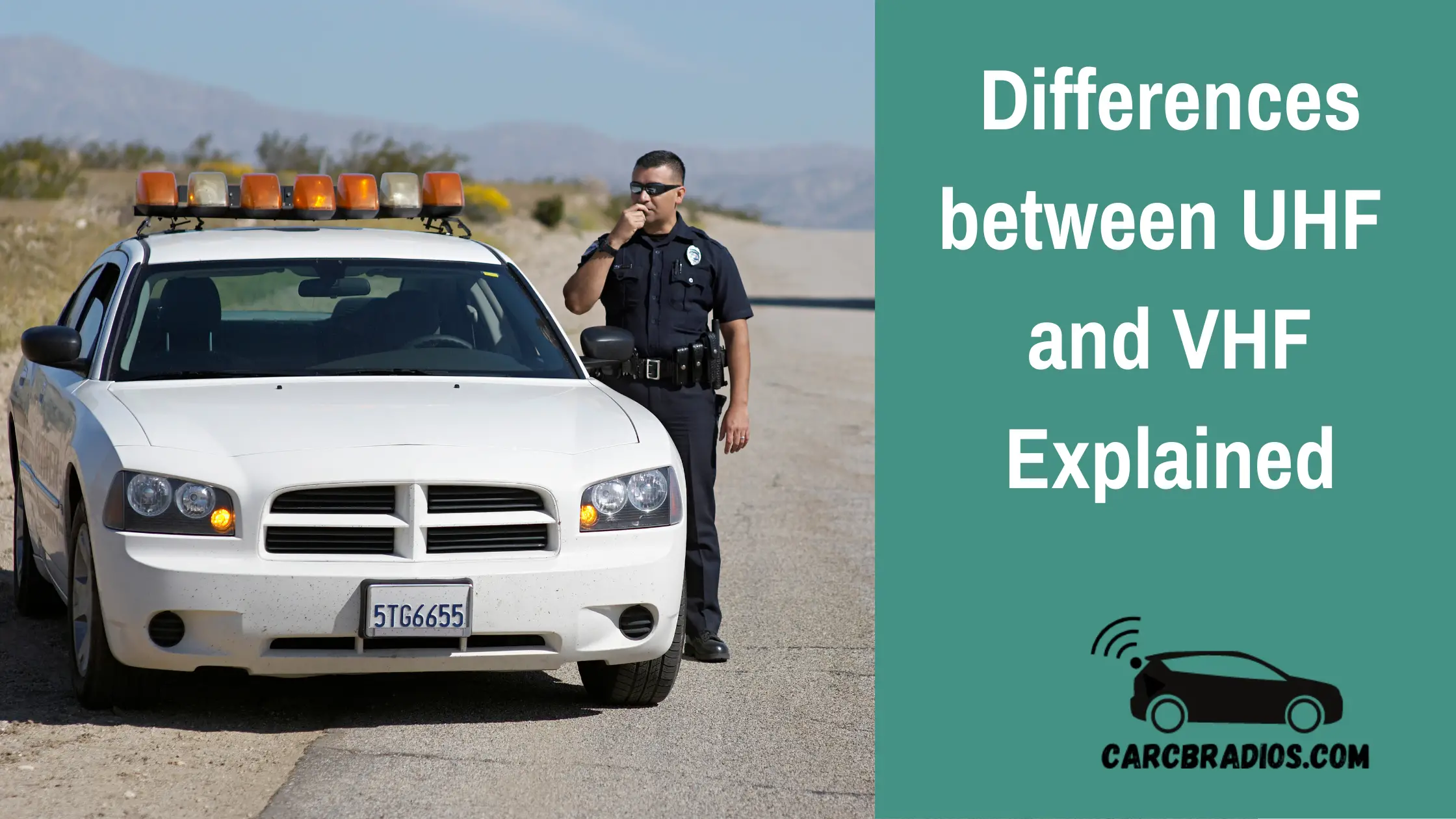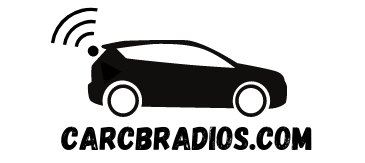By: Jeremy Neisser
There is a tendency for people to group all Frequency Modulated (FM) radio into one category. However, there is a noticeable difference between UHF - Ultra High Frequency and VHF - Very High Frequency.
It's not just the number that changes, it's also their intended purposes.
The key difference between the two is that UHF is line-of-sight, and VHF is not. A UHF signal will quickly weaken after it leaves the transmitter, so using an amplifier isn't necessary. You can carry your radio around with you in a small backpack or purse without much worry about losing the signal because there are usually no hills (or buildings) to block its path.
I will do my best to explain both and how they are used. Remember this is UHF radios and VHF radios, not FM just in general.
You may like: The Different Types of Antennas - FULL LIST
UHF vs VHF

#1 - Frequency 925-960 MHz vs 137-174 MHz
The first difference you'll notice between UHF - Ultra High Frequency and VHF - Very High Frequency is the frequency band they operate at. With frequencies of 950MHz or more it's considered to be UHF. VHF radios on the other hand starts around 30 MHz and ends in the higher hundreds depending on where you are.
#2 - Range and Bandwidth
This is a big one when discussing frequency modulation radio equipment: range and bandwidth. People often refer to something as being "ultra high frequency" because of how far it will broadcast but that's only half of the story since at lower frequencies, more bandwidth is required for successful communication, which leads us to our next difference...
#3 - Amplitude Modulation vs Frequency Modulation
I'll let Wikipedia explain this one. I won't try to re-invent the wheel:
"In analog amplitude modulation (AM) the strength of the carrier signal is varied, with the resulting change in signal strength conveying the modulating signal. In digital frequency-shift keying (FSK), binary data is transmitted through a series of on/off pulses that are based on whether it is currently producing a logical "1" or "0".
Radio amateurs operate equipment for both modes, and commercial broadcast stations transmit digital information both ways; frequency modulation has advantages [such as] less susceptibility to interference from weaker signals."
#4 - Transmit Power
Again, Wikipedia:
Ultra high frequency bandwidths require more complex equipment and antennas to support a given distance compared with VHF FM. The transmit power of an AM or FM signal is directly proportional to the frequency.
#5 - Antennas
In terms of antenna use, AM requires larger antennas than FM for the same range. I'll leave it at that...but there are many more differences between UHF Radio vs VHF Radio.
You might like: Best CB Base Antennas
#6 - Input/Output
Another difference between UHF and VHF radio is what type of connector they have on them. For example, you may have noticed that most older CB radios have the big round microphone inputs while newer ones do not. The reason? Because in 1989 after the restructuring of radio frequencies in 1950-53 by international UHF. This is because there isn't that much room between the high frequencies and the lower VLF radio band (30kHz up to 300kHz).
-You may like: Learn how to use a CB Radio the Right Way
UHF is used for FM broadcast radio, television signals, cell phones, two-way radio, satellite communications such as GPS, and satellites broadcasting TV. VHF on the other hand is used for FM broadcast radio, television signals, and two-way radio.
UHF vs VHF
Which is better UHF or VHF?
UHF radios and VHF radios have their pros and cons. For example, UHF radios are used for satellite data while VHF is used for radio communication equipment. That's just one of the things they do differently, there are many more differences between them such as coverage, bandwidth, etc...
As a consumer, you won't much care about the difference but if you're buying CB vs ham radio equipment or similar then it's a good idea to educate yourself on the subject before making your decision. It can save you lots of time in the end and with more knowledge comes better decisions!
Below is a table I created, it's only meant to be used as a simple reference for you and not an in-depth study on the topic so please don't treat it like one.
This will get you started but you'll have to do more research if you're looking for anything other than what this has directly to offer.
Is UHF or VHF better for the outdoors?
I can't speak for all types of outdoor equipment but I'm sure there are some that would work better in one frequency range than another.
For example, I live out in the country where cell phone service is spotty at best and requires a new antenna every year because trees grow so fast here. My CB radios, however, get great AM reception through my window as well as even better FM reception when listening through the back door while sitting outside.
In this case, UHF vs VHF radio wins hands down for me whether it's via an indoor or outdoor antenna!
Are police radios UHF or VHF?
UHF radios are more popular in the US for several reasons. The Police use UHF. One of them is because they were designed with citizens in mind vs commercial use, so naturally, they chose UHF over VHF according to FCC rules. The only reason police have been using VHF is due to it being a free space and not much interference from other signals.
For example, low-band (30-40MHz) is commonly used by fire departments. Now with more and more wireless devices entering the market, there are so many users that it's affecting police communication systems which in turn affects first responders because they aren't able to get a signal as fast as they used to.
This was one of the reasons why New York City switched over from VHF low band frequency to UHF high band for their system years ago!
Who uses UHF frequency?
If you ever go to a hotel, hospital, or large business then you will come across UHF because these types of businesses require contact between many different departments and may even have their own radio system set up. In this case, they use UHF radios for better range over VHF radios which doesn't reach far as it does when compared with other frequencies. In many cases it is a two way radio.
Can VHF talk to UHF?
VHF radios have its own set of frequencies which is different from UHF. In order for them to work together, you'll need a combination radio signal /radio waves like the MURS or FRS/GMRS radios that are capable of working on both UHF and VHF channels so you can communicate with other devices like walkie talkies, office phones and CBs.
You would have to do more research if you wanted to find out how they communicate together but it likely involves repeaters as well as some sort of coupling device.
You might have noticed that the higher the frequency band you go up to the larger its bandwidth becomes. This is why FRS/GMRS can only use 4 frequencies per channel while CBs often take anywhere from 40 to 70 simultaneously! If you would like a better understanding of Amateur or ham radios then be sure to check out my post on choosing one for your home or office because it goes into a lot more detail on the subject!
UHF vs VHF
What has longer range UHF or VHF?
Range varies on many different factors including terrain, weather, and even current conditions. In my opinion, the best way to test out your range is at a local park or somewhere with an open space where you can compare antenna types side by side!
If you're already using a UHF CB radio then you'll most likely be better off purchasing a higher gain antenna for it.
A lot of people don't realize that their antennas are no longer performing as well as they once did because their radios weren't meant for the outdoors -- this is why there are so many portable UHF's HTs on the market that seems to lack in performance!
The best thing you can do if you have an older VHF radio is to look up what kind of mobile antennas they have and purchase one just like it. This is your best option for making your VHF radio range farther than UHF because you'll be able to get a better signal gain!
-You may like: The Best Two-Way Radios (list).
Why does the military use UHF?
Military use UHF for portable devices such as radios, GPS, or any other small handheld device because they need to be able to work in a large range of weather and terrain conditions.
When you're working around the battlefield it's pretty much impossible to have an expensive piece of equipment like a radio get damaged so they need something rugged and reliable that can take a lot of abuse!
These frequencies are often used by law enforcement officers in rural areas where there is a lot of open space between buildings. In order for them to communicate with one another over long distances VHF is ideal because they can switch from channel 6 to channel 10 which offers more than triple the coverage when compared with UHF!
The military has their own language of communication, read all about it.
What frequency can go through walls?
The answer to this question depends on what type of wall you're trying to penetrate. If it's made from concrete then VHF is going to be your best bet since they have the largest transmit power which means better performance in harsh environments!
If you live in a wood-framed home or apartment building then UHF will work just fine as long as there isn't any RF interference present. It's important that all devices are at least 10 feet away from one another so their signals don't interfere with one another and cause problems like drop calls or static!
vhf radio frequencies
When it comes to VHF radio frequencies, there are a few things you need to take into consideration. The most important factor is the range of the transmission. VHF radios typically have a longer range than UHF radios, making them ideal for communications over longer distances. Another thing to consider is the power rating of the transmitter.
A higher power rating will result in a stronger signal, making it better suited for use in challenging environments. Finally, you'll need to decide on the appropriate frequency band for your needs. VHF radios offer access to a wider range of frequencies than UHF radios, making them a more versatile option.
Can I use my VHF or UHF radio outside?
You should never use these devices outdoors unless you're trying to communicate with someone up close. Having them outside could cause interference with other nearby signals which could result in dropped calls or poor call quality! If you have a base station or permanent outdoor setup then you'll need to look into purchasing an enclosure for your radio which will protect it from the elements!
How can I boost my range?
The main things you need to do in order to increase the range of VHF radios or UHF radios is by placing it outside and using high gain antennas.
You could also use a repeater, in addition, but they're only recommended if there are multiple HTs (or mobile devices) within close proximity because one repeater cannot handle more than three users!
-You may like: Best CB Amplifiers
Are UHF CB radios legal?
In most states, you cannot legally operate a UHF CB radio unless you have an FCC license or Amateur Radio License. This is because they have a power output of 4 watts which is very strong compared to other devices!
If you want to use your CB anywhere in the United States then it must be type accepted by the FCC otherwise you'll need an amateur license or a HAM radio.
You can purchase one from any online store and find them pretty cheap as long as you know what kind of frequency range you desire!
CB radios are not legal in Canada, Mexico or most European countries so make sure that you're operating within your local laws! This could mean jail time if caught using these types of radios without permission!!!
Are UHF frequencies used for business?
UHF frequencies are often used with rural businesses (like construction jobs) in order to communicate between small groups of workers instead of using wired solutions. This is ideal for job sites where there are multiple people working on one project and don't have their own HT!
However, these radios cannot be used across the world like VHF frequencies can because they're not accepted in other countries. Once again, this means that you'll need a HAM or FCC license if you plan to use them in the United States!
When it comes down to it it all depends on what your needs are. If you live in an area with lots of buildings and concrete then UHF is going to work better than VHF, but if you operate out in open fields then VHF offers more coverage!
Just don't forget that power output plays a major factor as well!
What travels farther VHF or UHF?
In an area where there are few obstacles in the way, a VHF signal will travel farther than a UHF signal. This is because the wave frequency of VHF is higher and much less likely to be blocked by buildings or trees. The high frequency also gives it a wider bandwidth, allowing more information to pass through at once which makes it ideal for transmitting multiple channels simultaneously.
UHF travels farther in complex terrain where VHF signals are likely to be blocked by hills or mountains. This is due to the fact that UHF typically has a line of sight connection between transmitter and receiver- meaning that if the signal is obstructed, it will be much harder for it to get through.
Both VHF and UHF are used in special cases- while most mobile phone networks operate at high frequencies (UHF), TV transmission often use low frequency bands (VHF).
What uses UHF?
UHF stands for Ultra High Frequency, but this doesn't mean that they can't be both picked up by bigger 'dish' style receivers. In fact many so-called 'rabbit ear' antennas can receive both VHF and UHF. Mobile phones It's not only TV signals that use different frequencies - so do mobile phone networks.
Most operate on high frequencies (or UHF) and allow users to send data as well as voice signals over the airwaves at break-neck speeds. Radio Like TV, radio uses both VHF and UHf bands although typically it is VHF that's used for broadcasting. UHF may be used by police forces for radios or citizens bands if they are within range of reach.
What uses VHF?
The main use of the lower frequency is in broadcasting through an aerial, meaning that traditional TVs can tune into these broadcasts using their built-in aerials.
They are also commonly used by walkie talkies because of their short range, meaning that up to 10 people can be in a small area and still communicate without needing to be on top of each other.
How does UHF propagate?
The UHF waves are propagated by line of sight. The distance they travel is roughly inverse to their frequency, so higher frequencies have a shorter range than lower frequencies.
How does VHF propagate?
The VHF waves are propagated by ground waves. The distance they travel is proportional to their frequency, so higher frequencies have a much longer range than lower frequencies.
Can VHF talk to UHF?
Yes. Cable television companies are already using VHF frequencies to deliver their content, however this is done through cable (coaxial cable) and not the air like standard TV signals. Both types of signal can exist simultaneously on one coaxial cable without interference because they use different parts of the spectrum.
UHF is closer to radio frequencies than visible light while VHF falls somewhere between ultra sound and infrared light on the electromagnetic spectrum.
You may like:

Hi & Welcome!
My name is Jeremy and I have been an avid car nut for many year. My first car was an 1987 Honda CRX. I put in my first Kenwood stereo, amp, 2 10" JLs and a CB Radio in it and have been an avid user of CBs and car radios for years. I'll do my best to share my tips, information and thoughts to help you with whatever question you might have, ABOUT ME
After I graduated from High School, I worked 5 years are Radio Shack and 3 years at Circuit City answering questions and helping customers with various electronics questions.

